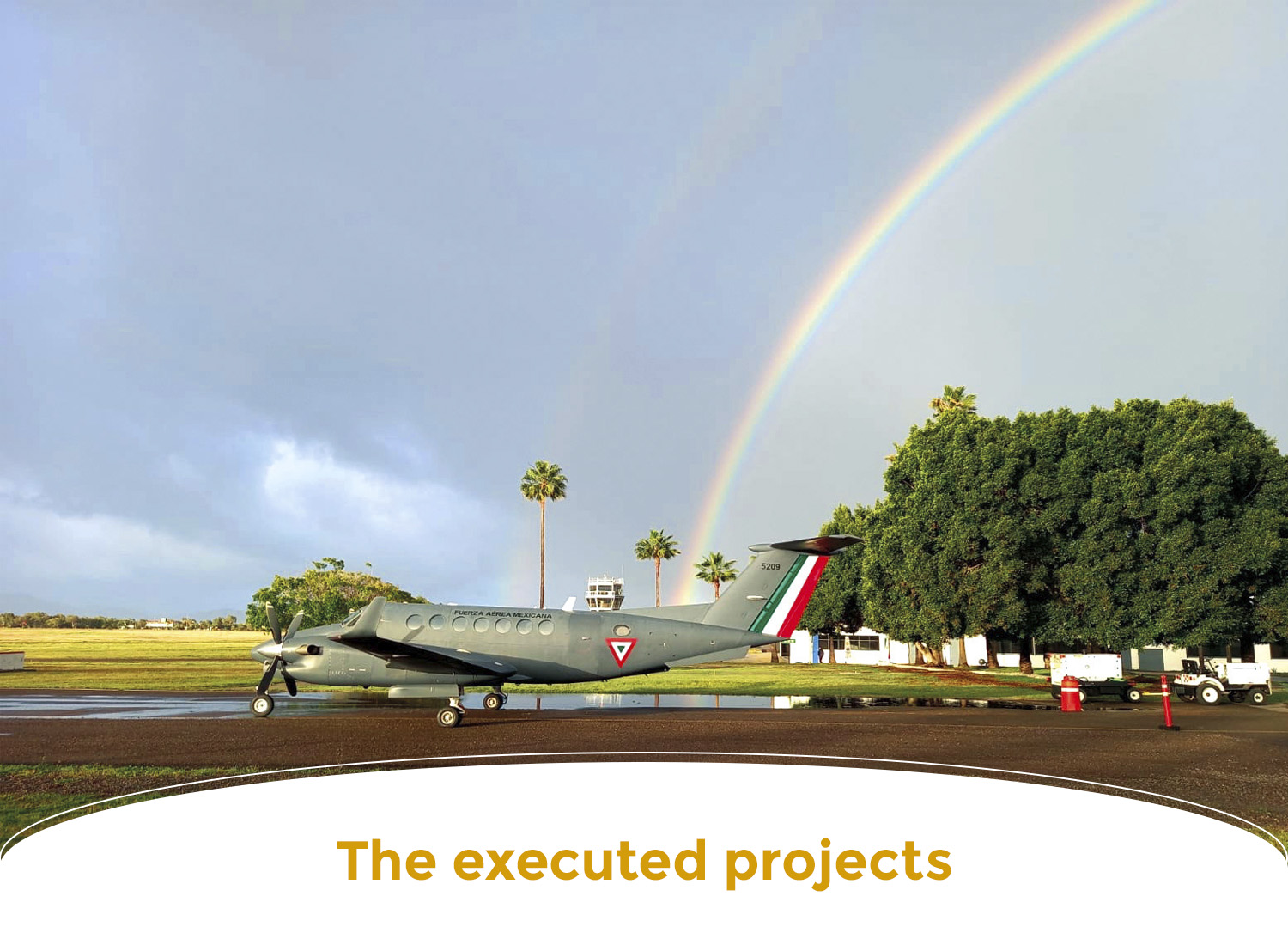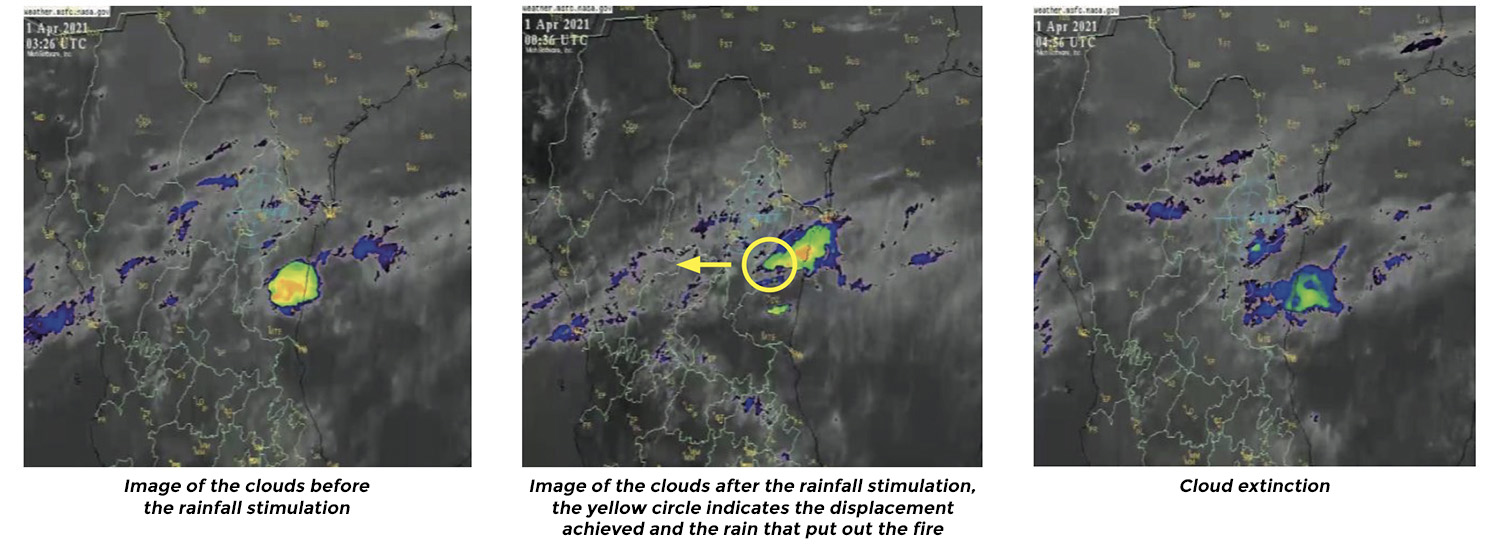


The state of Nuevo León, Mexico, bombards clouds to stop a fire in the Sierra de Santiago
The authorities appeal to the questioned technique of artificial rainfall stimulation to try to contain the flames
We have listed below some of the Rainfall Stimulation projects that were executed during the years 2020, 2021 and 2022 to try to reverse the predicted drought of historical magnitude in vast arid and semi-arid regions in northern Mexico. All the projects were successful, and these were the results:
- In all flights where RAINMATE© compound was applied under appropriate cloud conditions, precipitation was produced (100% efficiency).
- Precipitation increased with stimulation treatments and in relation to expectations (forecasts) in ranges that ranged between 26% and 45% (efficiency from 26 to 45%) measurements made through rain gauges established in Thiessen networks inside the work polygons.
- According to the information published on the drought monitoring by the SMN and CONAGUA, the drought was managed to practically disappear in all the areas where the Rainfall Stimulation projects were executed, coincidentally during the time of its operation.
- To evaluate results, a new tool was incorporated that consists of remote sensor monitoring of various elements such as humidity, soil humidity and response of the vegetation cover. The results of this tool showed an increase in these elements within the coverage of the flight areas.
- This tool also allowed us to observe that the effects of the RAINMATE© compound were manifested at distances greater than expected, being in some cases at distances greater than 50 km.
- During the development of these projects, important increases in the capture of water in the dams in the covered areas were achieved, however, it is clear that not all the precipitated water reached the dams, since an important part is lost through evaporation, another part by infiltration into the aquifers and finally what is of greatest interest for the projects is that the plants had water so that they could reverse the effect of the drought, which was largely achieved.
- The fires that were active at the beginning of the projects in the target polygons and even surrounding areas, were immediately extinguished.
Some of the Rainfall Stimulation projects executed between 2020 and 2022 are listed below:
PUTTING OUT FIRES IN MEXICO
Fire in Villa de Santiago, Nuevo León and Arteaga and Coahuila
On February 22, 2021, a fire that grew uncontrollably started as a result of the combustion of dry vegetation produced by the frosts of the season, mainly covering the upper regions of the municipalities of Villa de Santiago, Nuevo León and Arteaga and Coahuila, until March 31, the date of its extinction. The fire had a total area of 13,526 hectares (10,687 in Nuevo León and 2,839 in Coahuila) and became a serious threat to the surrounding rural populations.
Taking advantage of a cloudy approach from the cold front 47 that was forecasted close to the fire area, the Mexican National Defense Department ordered for March 27 the assignment of the Mexican Air Force King Air 350 plane that was carrying out Rainfall Stimulations activities in Ensenada by then, in Apodaca, Nuevo León.
The project technician and the pilots of the aircraft went out on a reconnaissance flight from the fire area on March 28 and found that the fires were going to be difficult to control in the conventional way because such fires were located at altitudes whose peaks reached 12,306 feet. It was almost impossible to stimulate any cloud from below due to the orographic accidents of the mountain range, and less so from above, due to the low visibility of the smoke from the fire and some clouds, which forced the pilots to improvise the way of attacking the cloud when it presented.
At 4:30 p.m. on March 31, it was decided to carry out the flight with the purpose of attracting the clouds from the trajectory of the cold front 47. The visualized objective was a massif of nimbustratus-type clouds moving south-southeast at a speed of 15 km/h and at approximately 200 km from the area of the fires.
The aircraft moved from the cloudy zone towards the zone of the polygon defined by the main active sources of the fire, over the Municipality of Santiago, Nuevo León between the Cerro de la Silla mountain and the Sierra Madre Oriental. The flight height established was between 13 and 15 thousand feet to clear the tops of the peaks where visibility was almost zero.
Stimulation trajectory lines (TE) from the cloud massif towards the polygon zone were drawn in the form of parallel lines first and transverse lines later to cover the surface of the established polygon of approximately 1190 km2 with precipitation reaction times of approximately between 10 to 15 minutes.
The following figures show the meteorological monitoring given in BAM 14 of the initial cloudy massif and the displacement observed towards the fire zone, induced by stimulation and which finally extinguished the fire in an operation that lasted just over 3 hours, traveled 1550 km and consumed 100 liters of the RAINMATE® compound.
Recording of the event using the infrared images of CONUS GOES EAST from Satellite GOES (Global Geostationary Weather Satellite)

ENDING DROUGHT AND FILLING DAMS OVERSEAS
Coming soon, this section is under construction.
